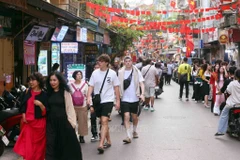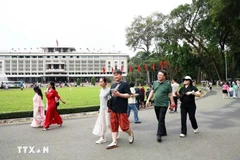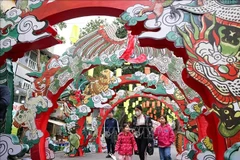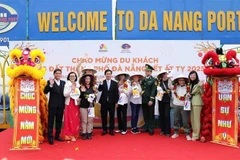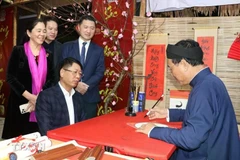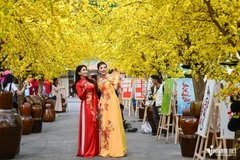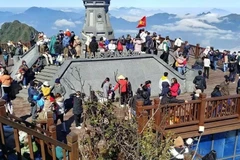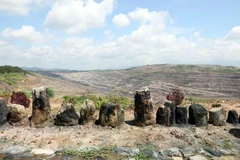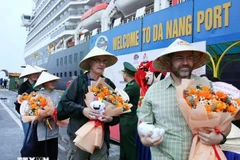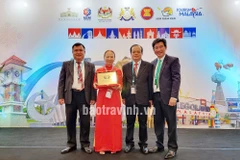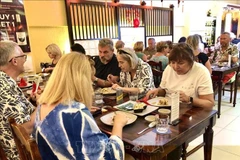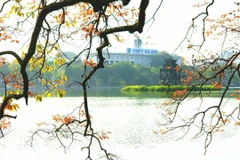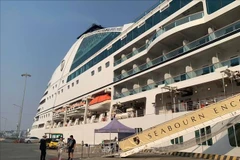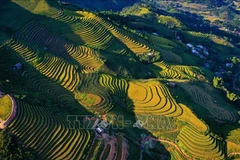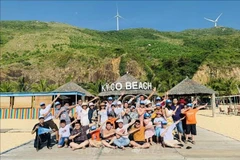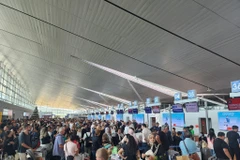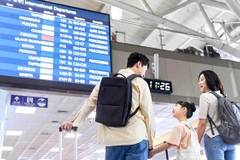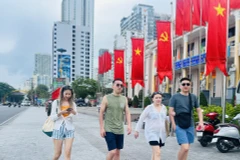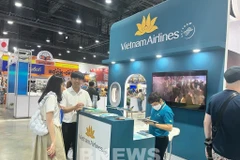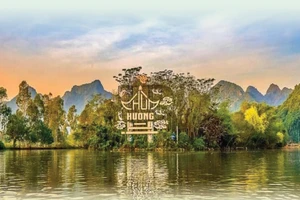However, in comparison with other provinceswith long tourism history in the region, the number of visitors andtourism turnover in Gia Lai is still modest and Gia Lai tourism stillhas many unexploited potential. Report by the Vietnam Business Forum.
Development goes hand in hand with cultural value preservation
At present, Gia Lai tourism is typically eco-cultural and mainlyexploited with in-province tourism programmes such as: visits to ethnichamlets, picnics, elephant riding, trekking, visits to battlefields,festivals, trading villages etc. Besides, some travel agents aregradually associating and introducing some tourism programmes with otherprovinces and neighbouring countries such as China, Laos, Cambodia,Thailand, through Le Thanh and Bo Y International Border Gates.
In the past, the province has also emphasised planning and developmentof some projects including: Tonle Sap Garden, Phu Cuong Waterfall, GiaLai Park of ethnic cultures, Ayun Ha Lake eco-tourism site, and Kon KaKinh National Park. Therefore, diverse tourism activities are appealingmore and more visitors coming to Gia Lai.
Economically, Gia Lai’s annual GDP growth rate in last few years was13.6 percent on average, while the commerce-service sector (includingtourism) grew by 15 percent a year, accounting for 30.2 percent ofprovincial GDP. Individually, the tourism sector has maintained annualgrowth rates of 12.35 percent regarding visitors, over 27 percentregarding turnover and more than 30 percent concerning tourism GDP.
However, according to Director Phan Xuan Vu – Gia Lai Department ofCulture, Sports and Tourism, another crucial success is that theprovincial efforts have helped preserve local natural andsocial-cultural values, thereby Gia Lai features cultural festivals andsome traditional occupations have been revived such as knitting, brocadeembroidery and traditional musical instrument making. Hence, localresidents have had more jobs created, with gradually improving incomeand awareness.
Increased level of tourism
Despite considerable achievements, in general, the provincial tourismsector hasn’t appeared competitive nationally or internationally givenits limitations such as: limited variety and low quality of tourismproducts which are mainly exploited from existing natural resources andcultural features of ethnic groups; weak operation of travel agents,little attention paid to investment and restoration of vestiges, visitsites and brand development of Gia Lai tourism.
Understanding the importance and role of tourism toward the provincialsocio-economic development, the Provincial Party Committee issuedResolution 13-NQ/TU dated August 26, 2008 on tourism development to 2015and orientation to 2020, aiming at rapid but sustainable tourismdevelopment so that it becomes an economic sector with remarkablecontribution to the service sector's GDP by 2015 and one of theprovince's most important economic sectors by 2020.
Phan Xuan Vu said that in order to successful implement this strategy,the Authority required relevant agencies as well as Gia Lai tourism toapply feasible solutions such as actively call for investment,efficiently mobilise and use funds for development of tourism forms,especially eco-tourism and cultural-historical tourism which suit localstrengths and potentials; improve the quality of existing tourism formsand develop new ones; and foster connections with other provinces,cities and regional countries. Emphasis should be laid on core tourismproducts such as eco-tourism, cultural – historical tourism, andresorts.
In addition, attention should be paid toexpansion of supporting services such as caravan tourism, business trip,shopping, and trading villages. The advantages of international andnational border gates in Gia Lai and the Central Highlands region shouldbe exploited to organise package tours with key markets of ASEANcountries including Thailand, Laos and Cambodia. These also areadvantages of supporting tourism products of which local tourism shouldmake full use.
Another factor determining thesuccess or failure of the development strategy is human resources.Heading for future professional tourism, Gia Lai needs to strengthentraining and retraining of labourers in tourism enterprises and businessunits to improve qualification and knowledge of personnel in order tomeet increasing demands of visitors. There should be plans for trainingprofessional knowledge and skills as well as foreign languages forofficials and civil servants in sectoral and public governance.
Furthermore, there should be intensified experience sharing amonglocalities and international organizations through domestic and overseasseminars, conferences, especially in ASEAN countries. Trainingprogrammes on tourism business knowledge should be developed andimplemented, targeting the tourism labour force. At the same time, GiaLai also needs to form and promote community education programmes toraise awareness of people about behaviour and communication withtourists. Meanwhile, the province can introduce policies to attract highquality workers to Gia Lai, including those for tourism.
Given its potential resources for eco-tourism and historical tourism,Gia Lai has opportunities to make this “non-smoke” industry take off infuture. Practical solutions and orientations with visions andfeasibility will help to lift the province's tourism, contributing tolocal socio-economic success.-VNA

